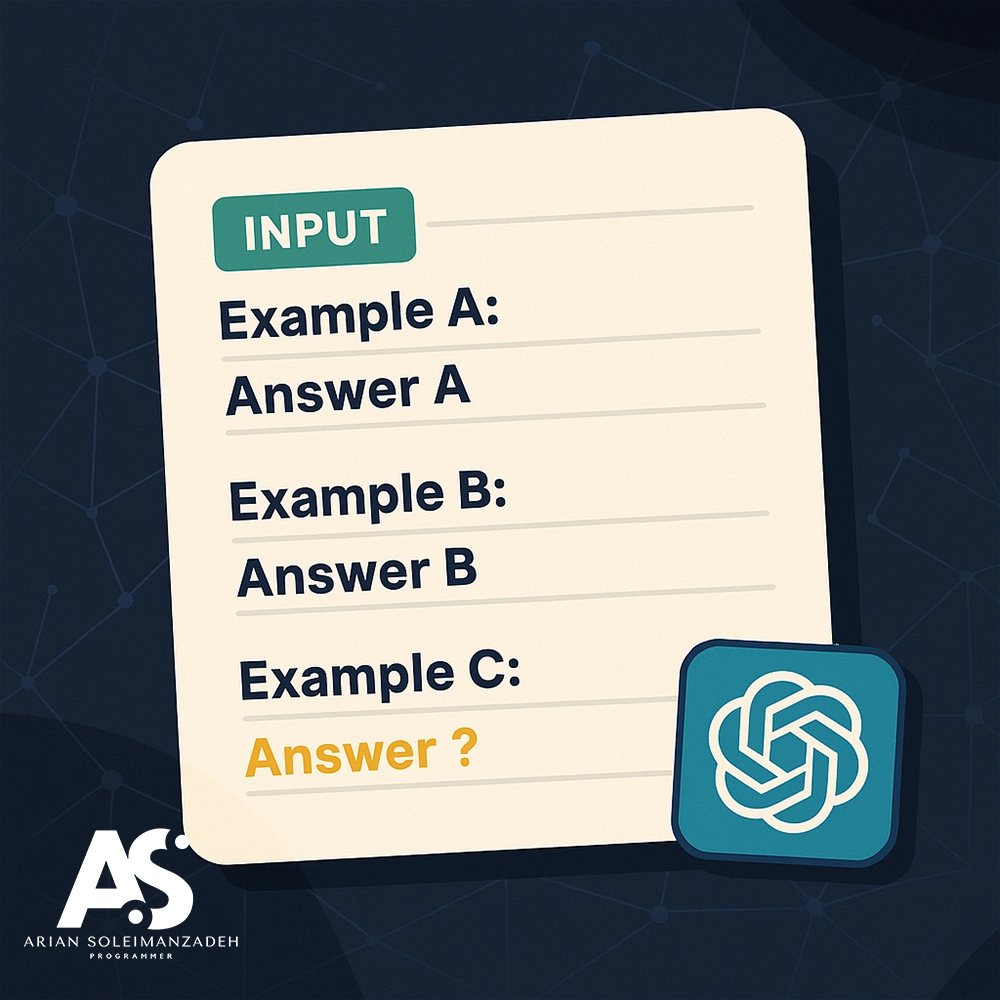
Mastering Few-Shot Prompting: Unlocking LLM Power with Examples
In the world of large language models (LLMs), how you ask is as important as what you ask. One of the most effective techniques to enhance model alignment is Few-Shot Prompting — a method where a user provides a few examples within the prompt to teach the model the desired behavior.
Whether you're summarizing emails, writing SQL queries, classifying sentiment, or generating code, Few-Shot Prompting can bridge the gap between raw model potential and practical output.
📌 What is Few-Shot Prompting?
Few-Shot Prompting involves embedding a small number (typically 2 to 5) of input-output examples directly within the prompt. The model uses these as implicit instructions to generalize and respond to a new input in the same format.
Example: Sentiment Classification
Review: "I absolutely loved the product!"
Sentiment: Positive
Review: "It was a waste of money."
Sentiment: Negative
Review: "It worked fine, but nothing special."
Sentiment:
🧠 The model is now expected to complete with: Neutral.
🧠 Why It Works
LLMs are pattern matchers trained on vast corpora. Providing examples:
- Reduces ambiguity in instructions
- Provides structure and expected output format
- Anchors the model’s "thinking" using analogical reasoning
It’s like showing the model a few flashcards before asking a similar question.
🔍 Use Cases Across Domains
🔠 1. Text Classification
Text: "The delivery was late and the item was damaged."
Category: Complaint
Text: "Thanks for the fast support!"
Category: Praise
Text: "I didn’t receive any order confirmation."
Category:
✅ Output: Inquiry
🧮 2. Math Word Problems
Problem: John has 3 apples. He buys 2 more. How many apples does he have now?
Answer: 5
Problem: Sarah had 10 candies and ate 4. How many are left?
Answer:
✅ Output: 6
🧬 3. Code Generation
Task: Convert a list of strings to uppercase in Python.
Input: ["a", "b", "c"]
Output: ['A', 'B', 'C']
Task: Reverse a list in Python.
Input: [1, 2, 3]
Output:
✅ Output: [3, 2, 1]
🌍 4. Translation with Nuance
English: "Good morning, everyone!"
French: "Bonjour à tous !"
English: "I’m very tired today."
French:
✅ Output: Je suis très fatigué aujourd'hui.
🔧 Designing Effective Few-Shot Prompts
| Principle | Tip |
|---|---|
| Consistency | Use uniform format across all examples |
| Clarity | Avoid ambiguous or vague labels or categories |
| Relevance | Ensure examples are similar in task structure and tone |
| Brevity | Keep examples concise but illustrative |
| Separation of Roles | Use |
🚧 Limitations of Few-Shot Prompting
- Token Limit: Each example uses tokens. More examples = shorter input length.
- Bias toward Examples: Slight variation in examples can skew output drastically.
- No Memory: Few-shot is static — the model forgets examples in the next interaction.
- Model Dependency: Some models (like GPT-4) respond better to few-shot than others.
🧪 Comparison with Other Prompting Paradigms
| Prompting Type | Description | Example Quantity | Use Case |
|---|---|---|---|
| Zero-Shot | Just instruction, no example | 0 | General Q&A, factual lookup |
| One-Shot | Instruction + 1 example | 1 | Specific task adaptation |
| Few-Shot | Instruction + 2–5 examples | 2–5 | Custom behavior + pattern learning |
| Fine-Tuning | Training on many labeled examples | 100s–1000s | Specialized domain-specific tasks |
🎯 Practical Tips
- Use the most typical examples, not edge cases.
- Order matters: Recent examples influence output more.
- Add a clear separator between each example (e.g.,
---or blank lines). - Combine Few-Shot + Instructions for better accuracy.
🧪 Advanced Example: Multi-Class Emotion Detection
Tweet: "Just got promoted at work!!! 🎉"
Emotion: Joy
Tweet: "Why does nothing ever work out?"
Emotion: Sadness
Tweet: "I can’t believe they did that to me."
Emotion:
✅ Output: Anger
🧠 Meta-Note: Why You Should Care
If you’re using LLMs without fine-tuning, few-shot prompting is your most powerful tool for customization. It allows domain-specific adaptation, reproducibility, and control — all while avoiding infrastructure overhead.
Conclusion: Think Like a Prompt Engineer
Few-shot prompting is more than a hack — it’s a cognitive alignment tool. By carefully selecting and formatting your examples, you guide the model to your desired output. In a future full of AI assistants, being fluent in prompting is as crucial as coding.
Tags and Sharing
Tags: Few-Shot Prompting, Prompt Engineering, LLM Use Cases, NLP Examples, Text Generation
Share This Post:
LinkedIn | Twitter | Reddit | Telegram
